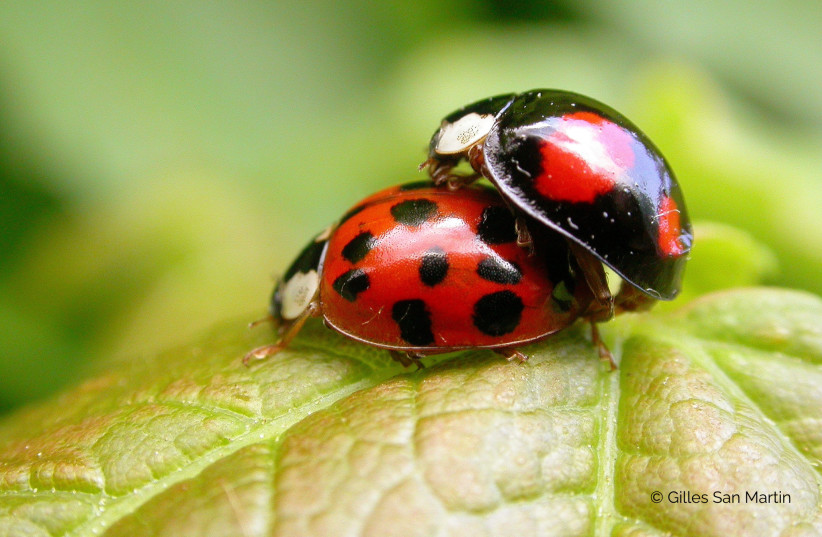A recent report by the Intergovernmental Platform on Biodiversity and Ecosystem Services (IPBES) reveals a troubling trend: Over 37,000 alien species are rapidly spreading across the globe due to human activities, and this number continues to surge.
Over 3,500 are classified as harmful invasive alien species, imposing a staggering economic burden of over $423 billion annually in 2019. These costs have escalated at least fourfold every decade since 1970.
“Invasive alien species are the subset of alien species that are known to have become established and spread, which cause negative impacts on nature and often also on people,” the Assessment Report on Invasive Alien Species and their Control explained. About 6% of alien plants; 22% of alien invertebrates; 14% of alien vertebrates; and 11% of alien microbes are known to be invasive.”
Eighty-six experts from 49 countries worked for more than four-and-a-half years to produce the report, including Israel’s Prof. Bella Galil of the Steinhardt Museum of Natural History and the Israel National Center for Biodiversity Studies. The report draws on over 13,000 references and was approved last week in Germany by representatives of the 143 member States of IPBES.
Alien species major factor in animal and plant extinctions
The report found that “invasive alien species have been a major factor in 60% – and the only driver in 16% – of global animal and plant extinctions that we have recorded, and at least 218 invasive alien species have been responsible for more than 1,200 local extinctions,” explained co-author Prof. Anibal Pauchard from Chile.
Some 85% of these species negatively impact people’s quality of life, the report said, such as those that cause disease, like malaria, Zika, and West Nile Fever – all spread by invasive alien mosquitoes. They have also damaged livelihoods, like in Lake Victoria, where fisheries have declined due to tilapia’s depletion due to the spread of water hyacinth.
In Israel, 460 alien invasive species have been identified along the Mediterranean coast, mainly via the Suez Canal, and hundreds more have been found on land since the 1970s, Galil said.
Last year, the state comptroller’s report concerning “prevention of invasive alien species’ impacts and protection of biological diversity” revealed weak commitment and failed management of the problem.
“I hope the IPBES report will catalyze prompt implementation of the comptroller’s recommendations,” Galil said. “The harm is local, global, and, of course, on the individual.”
In the report, a special box focuses specifically on marine invasive species, Galil’s specialty. She said that the 460 alien species were identified on a strip of coast of less than 200 kilometers.
“Per kilometer, Israel could be in the Guinness Book of World Records for most invasive alien species, but this is not a record I would like to hold,” Galil joked.
Some of the species have been poisonous and venomous fish that have led to medical issues - some serious - when they attack humans.
Moreover, she explained because Israel is a small country with a relatively dense population living at a relatively high-income level, many natural habitats have been disturbed by humans which then struggle to survive. In addition, the country purposefully uses invasive species to assist in agriculture.
The eucalyptus trees in Israel were initially brought from Australia to help dry out swamps, breeding grounds for malaria-spreading mosquitoes. Today, they are one of the most familiar sights on the Israeli landscape. While beautiful and beneficial, said Galil, they also led to the extinction of some native plants and animals, some of which were endemic to this part of the world.
Israel also accidentally imported the small fire ant when a factory in Kibbutz Afikim brought wood from South America to the country. Within a short while, the ants spread throughout the country. Today, they are found around the Kinneret, where they can attack tourists.
“These ants deliver extremely painful bites, and if bitten as a young child or by someone with a venom allergy, it may necessitate medical intervention,” Galil explained.
Last December, at the 15th meeting of the Conference of Parties to the UN Convention on Biological Diversity, 200 countries agreed to “Eliminate, minimize, reduce and or mitigate the impacts of invasive alien species on biodiversity and ecosystem services by identifying and managing pathways of the introduction of alien species, preventing the introduction and establishment of priority invasive alien species, reducing the rates of introduction and establishment of other known or potentially invasive alien species by at least 50 percent by 2030.”
Galil said it is a lofty but essential goal.
The report highlights that the interactions between invasive alien species and other influencing factors could magnify their dangers. For instance, when invasive alien plants intersect with climate change, it can lead to more frequent and more severe wildfires, as seen in recent catastrophic events globally, ultimately releasing increased carbon dioxide into the atmosphere.
“Business-as-usual is actually unlikely,” said co-author Prof. Helen Roy. “With so many major drivers of change predicted to worsen, it is expected that the increase of invasive alien species and their negative impacts are likely to be significantly greater.
“The accelerating global economy intensified and expanded land- and sea-use change, as well as demographic changes, are likely to lead to increases in invasive alien species worldwide,” Roy continued. “Even without the introduction of new alien species, already established alien species will continue to expand their ranges and spread to new countries and regions. Climate change will make the situation even worse.”
The authors of the paper call for prevention through border biosecurity and strictly enforced import controls, as well as through preparedness and early detection.
“Prevention is absolutely the best, most cost-effective option – but eradication, containment, and control are also effective in specific contexts,” Pauchard said. “Ecosystem restoration can also improve the results of management actions and increase the resistance of ecosystems to future invasive alien species. Indeed, managing invasive alien species can help to mitigate the negative effects of other drivers of change.”

